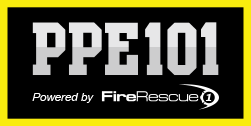
Consider all that’s involved in caring for your gear to extend its service life.
Photo/FEMA
Taking care of all the elements of your structural firefighting protective ensemble – your PPE – is more important than ever, particularly as we’ve become more educated about the health hazards posed by dirty turnout gear. Further, the equipment itself has grown more expensive than ever, meaning fire departments must maximize every piece of gear.
Let’s consider all that’s involved in caring for your gear to extend its service life.
TAKING STOCK
A good place to start is with an inventory of all the elements of your PPE. For most firefighters, that list should look something like this:
- Helmet
- Hood
- Coat
- Pants
- Boots
- Gloves
- Eye protection goggles or safety glasses
- Hearing protection
- SCBA
In the article “Why YOU need to track your on-the-job exposures,” I wrote about the need for individual firefighters (career firefighters and volunteer firefighters alike) to document ALL of their job-related exposures. That documentation is going to be the cornerstone of your future workers compensation claim if you develop cancer or cardiovascular disease or a pulmonary disease (e.g., emphysema or bronchitis) during or after your career.
I think that it’s going to be equally important that you have documentation that you’ve done your job keeping your structural firefighting PPE clean and in good repair in accordance with the equipment’s original manufacturer and NFPA 1851: Standard on Selection, Care, and Maintenance of Protective Ensembles for Structural Fire Fighting and Proximity Fire Fighting.
Become informed and educated about each of the elements of your structural firefighting PPE by reading the documentation from the original manufacturer (i.e., the owner’s manual). The manufacturers of your PPE also have a tremendous amount of useful information on their websites that can aid in your exploration of your gear, particularly the manufacturer’s recommendations for cleaning and maintenance.
For example, the MSA Safety/Globe Turnout Gear Care & Cleaning webpage includes a link to its online NFPA 1851 training course where you can learn how to comply with the care and cleaning requirements of the standard through online learning.
DOCUMENTING YOUR CARE
One example of how PPE manufacturers are helping firefighters document gear care is PPEtracker, Globe’s PPE Tracking System. PPEtracker is a fully functional database-backed website that makes it easy for firefighters to comply with NFPA 1851 requirements for care and cleaning of all elements of your protective ensemble. This free service is available 24/7/365 from any computing device (e.g., computer, tablet, smart phone) with internet access.
Once each PPE element is entered into PPEtracker, a firefighter can then electronically document all activity for all their gear – helmets, hoods, jackets, pants, boots, gloves, and SCBA masks – over the lifecycle for each element. Starting with initial receipt of gear, a firefighter can quickly and easily document all inspections, cleanings and repairs to individual PPE elements all the way through an element’s eventual retirement.
Similar programs available from other PPE manufacturers include Gear Tracker (Fire-Dex), FASET (Lion), and PPE Asset Management (Honeywell). Not all these programs are free, so check with each manufacturer’s product before selecting one.
Third-party software capable of managing the care and maintenance of PPE elements can be either a stand-alone (e.g., PPE Software and Gear Wash Recordkeeping) or as part of a suite of fire station management functions (e.g., ESO Fire RMS, which includes key elements from FIREHOUSE Software; Firehouse ManagerCollectiveData).
CLEANING YOUR GEAR
It would be near impossible to cover the proper cleaning processes for all the PPE elements that I listed at the top of this article. So again I’ll say that you should consult the recommendations of the original manufacturer of a particular PPE element for proper guidance and to avoid doing anything that would void any warranty on a piece of equipment.
I will, however, delve into some basic information about two pieces of your PPE ensemble: Your helmet and your protective hood. The former hardly gets mentioned when discussing proper cleaning of PPE elements while the latter is still a relatively new addition and many firefighters may not have gotten the “scoop” on cleaning and inspecting their hoods.
HELMETS
Your helmet is likely the one element of your protective ensemble that gets the most exposure to the chemicals, chemical compounds and carcinogens making up the “toxic soup” that immerses you during interior structural firefighting. And it’s also the one piece that gets the most frequent wear, as you respond to other calls for service (e.g., MVCs, WUI fires, medical emergencies) as well as participating in training sessions and drills.
And much of the wear in those nonstructural firefighting situations happens without your protective hood in place. So, if the soft goods inside your helmet are not cleaned after every structure fire exposure, you’re absorbing those contaminants through the skin on your head.


